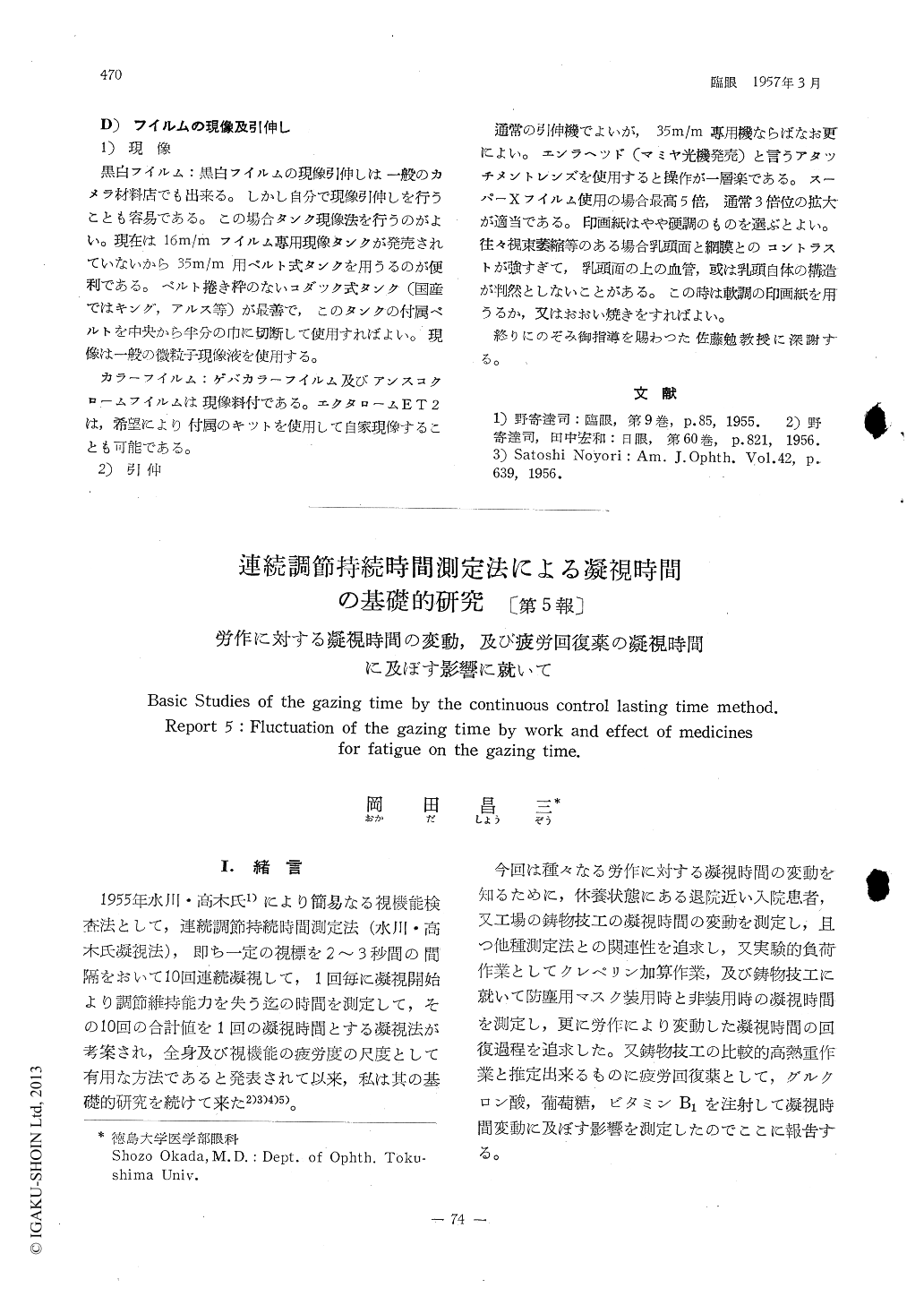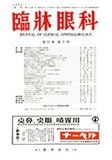Japanese
English
- 有料閲覧
- Abstract 文献概要
- 1ページ目 Look Inside
I.緒言
1955年水川・高木氏1)により簡易なる視機能検査法として,連続調節持続時間測定法(水川・高木氏凝視法),即ち一定の視標を2〜3秒間の間隔をおいて10回連続凝視して,1回毎に凝視開始より調節維持能力を失う迄の時間を測定して,その10回の合計値を1回の凝視時間とする凝視法が考案され,全身及び視機能の疲労度の尺度として有用な方法であると発表されて以来,私は其の基礎的研究を続けて来た2)3)4)5)。
今回は種々なる労作に対する凝視時間の変動を知るために,休養状態にある退院近い入院患者,又工場の鋳物技工の凝視時間の変動を測定し,且つ他種測定法との関連性を追求し,又実験的負荷作業としてクレペリン加算作業,及び鋳物技工に就いて防塵用マスク装用時と非装用時の凝視時間を測定し,更に労作により変動した凝視時間の回復過程を追求した。又鋳物技工の比較的高熱重作業と推定出来るものに疲労回復薬として,グルクロン酸,葡萄糖,ビタミンB1を注射して凝視時間変動に及ぼす影響を測定したのでここに報告する。
I measured fluctuation of the gazing time of in-patients in rest, casters in relatively hard work, and men in experimentally loaded work by using the cuntinuous control-lasting time method (Mizukawa-Takagi's methcd), and followed up fluctuation of thegazing time and its recovering course. Then, measured effects of medicicines for fatigue on fluctuation of the gazing time. The results I got from the comparison between this method and fatigue-mea-suring methods using other oisual functions, were that the gazing time has the more sensi-tive respond to work and loaded work than the near point method etc.

Copyright © 1957, Igaku-Shoin Ltd. All rights reserved.


